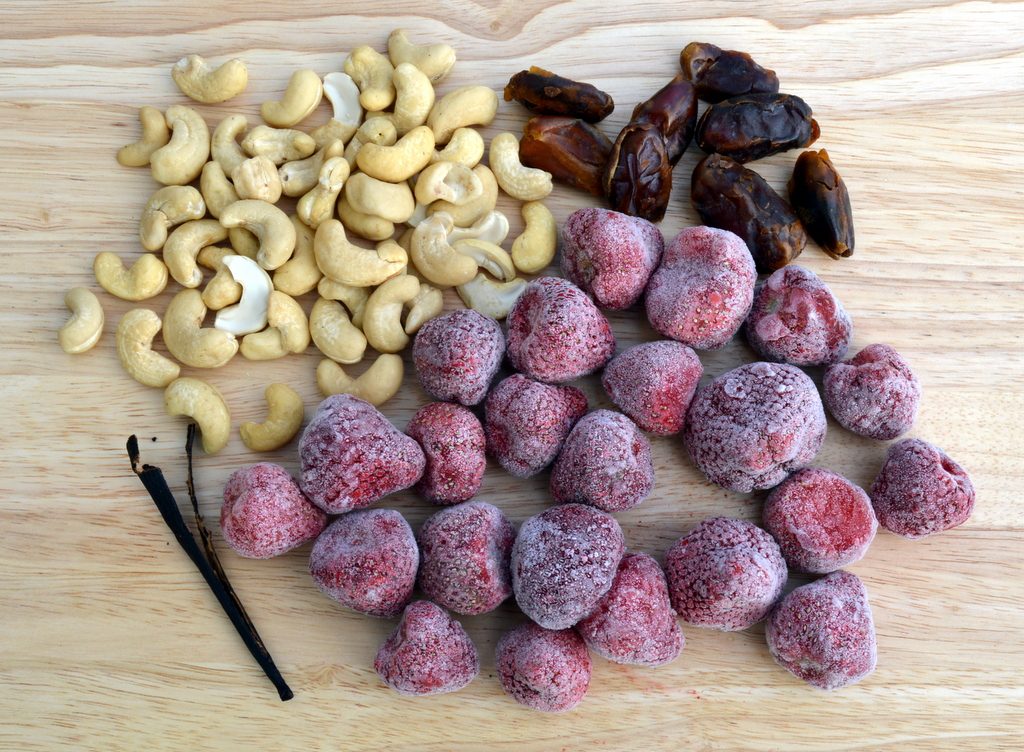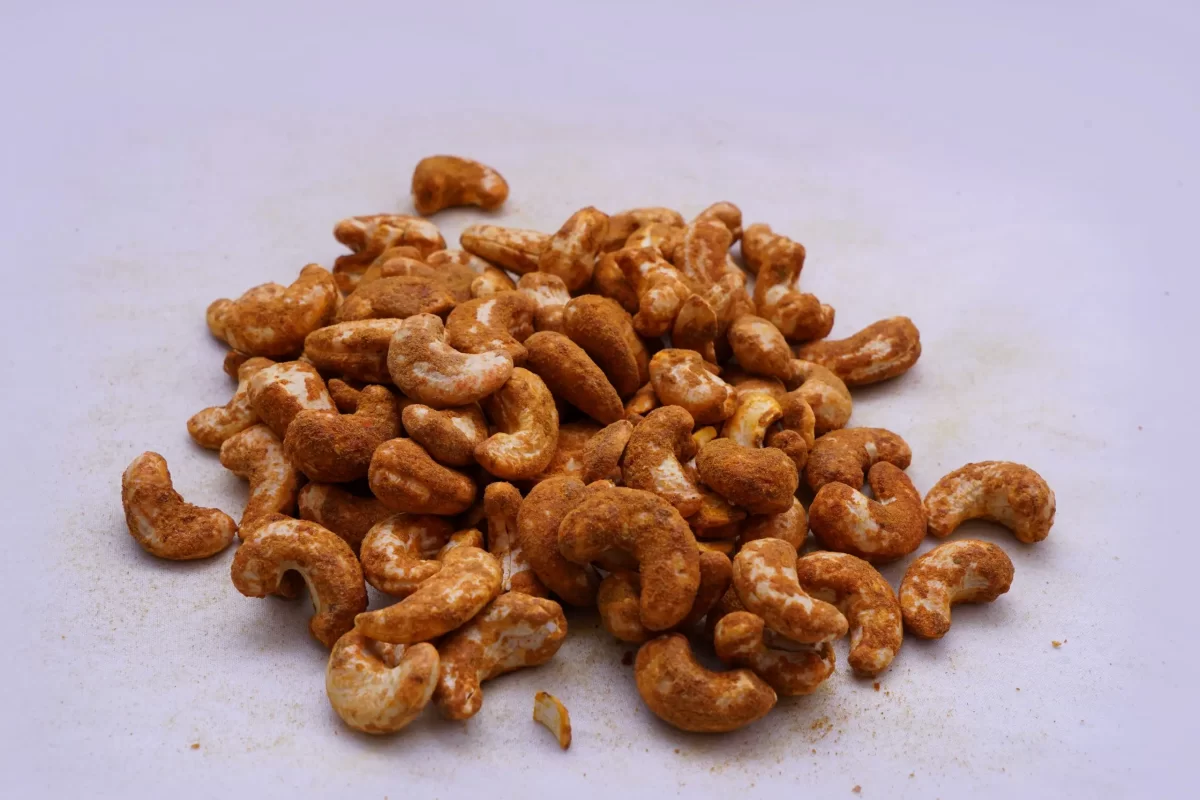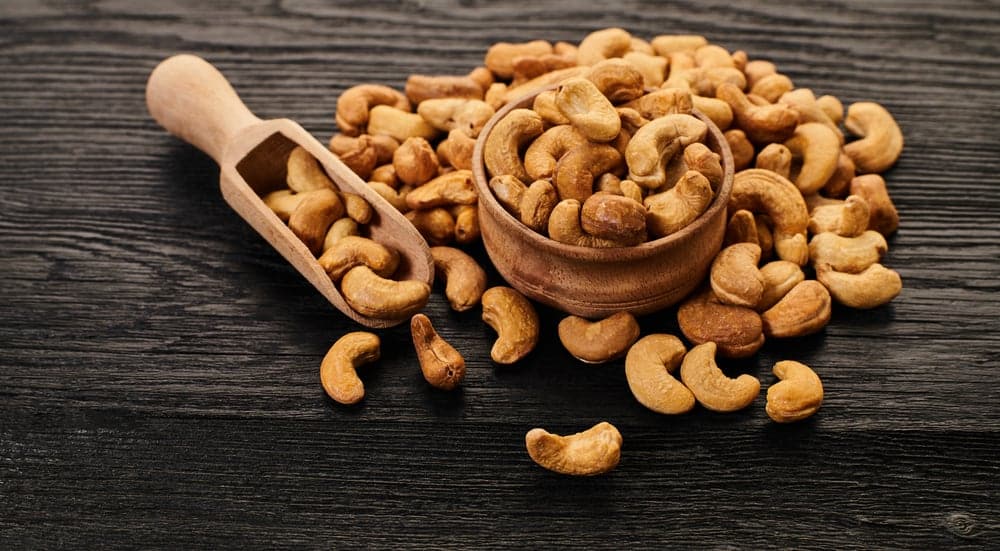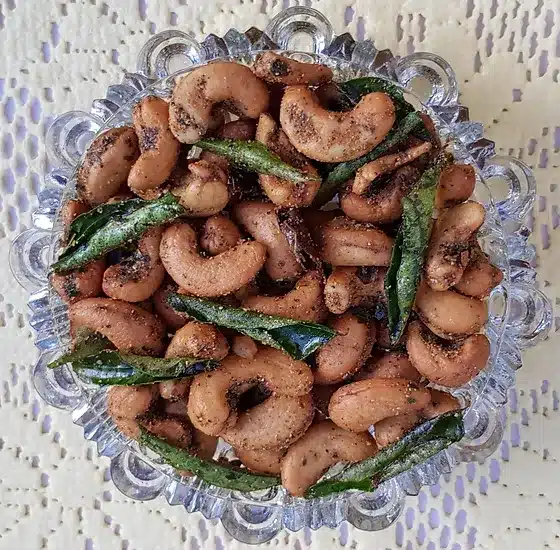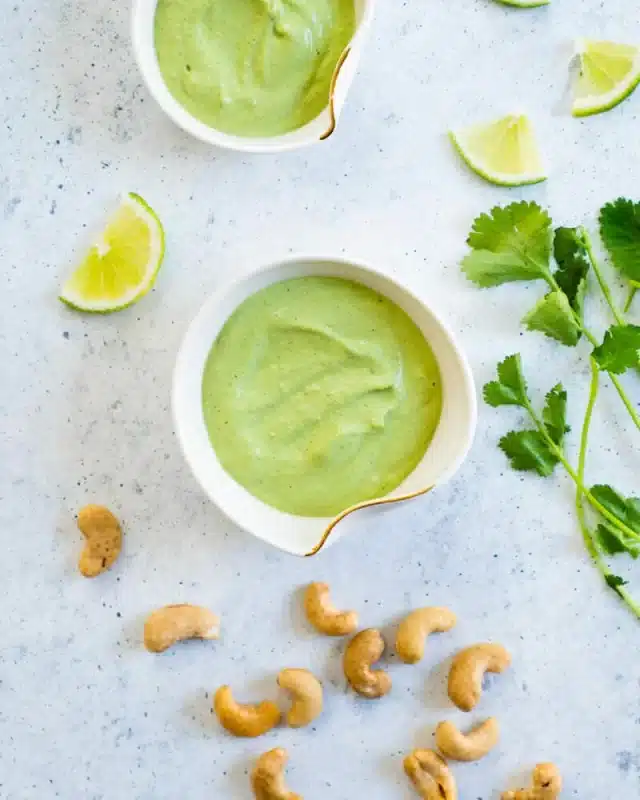Blog
Exploring the Flavors of Kadipatta Cashews?
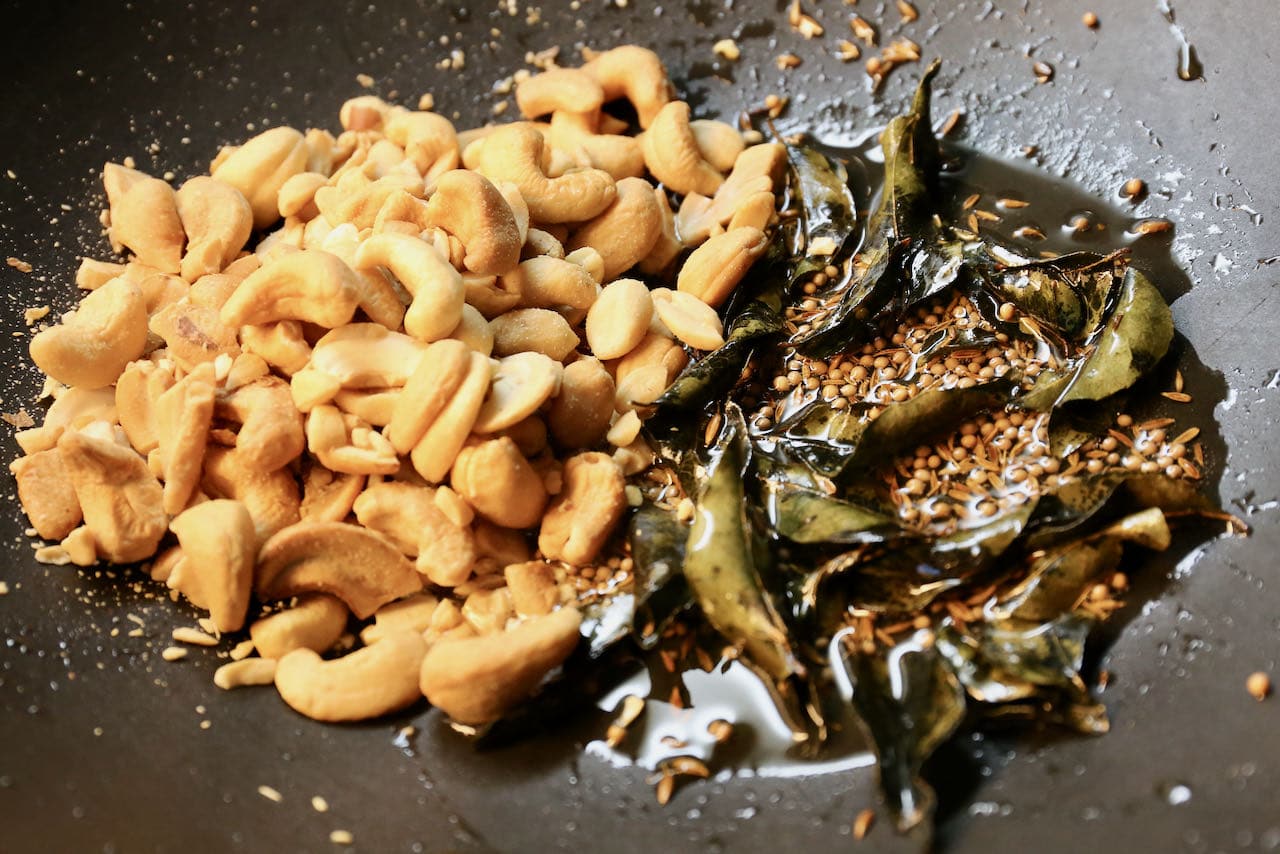
The Aromatic Allure of Kadipatta
1. Fragrant Herb:
- Kadipatta, or curry leaves, are known for their distinct aroma, which is often described as a blend of citrus and herbal notes. This aroma is a defining characteristic of many South Indian and Southeast Asian dishes.
2. Culinary Significance:
- Kadipatta is a staple ingredient in Indian cooking, particularly in the preparation of curries, rice dishes, and chutneys. It imparts a unique depth of flavor and fragrance to these dishes.
The Fusion of Kadipatta and Cashews
1. A Flavorful Blend:
- When kadipatta is combined with cashews, the result is a harmonious fusion of flavors. The earthy and nutty notes of cashews complement the bright and aromatic profile of kadipatta, creating a well-balanced taste experience.
2. Unique Aroma:
- Kadipatta cashews carry the distinctive aroma of curry leaves, which is both captivating and inviting. This aroma makes them an enticing snack that appeals to the senses.
Culinary Versatility
1. Snacking Sensation:
- Kadipatta cashews are an excellent standalone snack. They offer a unique alternative to conventional cashews, elevating your snacking game with their aromatic flavor.
2. Culinary Enhancer:
- In addition to snacking, kadipatta cashews can be used as a flavorful ingredient in various dishes. Crush them to create a coating for fried or baked foods, or sprinkle them on top of salads and rice dishes for added texture and taste.
3. Perfect Pairings:
- Kadipatta cashews are a versatile accompaniment to beverages, making them an ideal snack for tea time or as a side dish during social gatherings. Their distinctive flavor pairs well with both hot and cold drinks.
Exploring the flavors of kadipatta cashews is a journey into the heart of Indian cuisine, where fragrant herbs and nuts come together to create a sensory delight. Whether enjoyed on their own as a snack or used to enhance the flavors of your favorite dishes, kadipatta cashews offer a unique and aromatic experience that is both satisfying and memorable. So, embark on this flavorful journey and savor the fusion of kadipatta and cashews, one crunchy bite at a time.
Health Benefits of Kadipatta Cashews
Beyond their delightful flavor, kadipatta cashews offer potential health benefits:
1. Nutrient-Rich Cashews:
- Cashews are a good source of essential nutrients, including healthy fats, protein, vitamins, and minerals. They provide energy, support muscle health, and offer essential micronutrients.
2. Antioxidant Properties:
- Curry leaves (kadipatta) are rich in antioxidants, including vitamins A and C, which can help combat oxidative stress and reduce the risk of chronic diseases.
3. Digestive Aid:
- Kadipatta is known for its potential to aid digestion and alleviate gastrointestinal issues. It can help reduce bloating and indigestion.
4. Potential Anti-Inflammatory Effects:
- Some studies suggest that kadipatta may have anti-inflammatory properties, which can contribute to overall health and well-being.
5. Flavorful Nutritional Boost:
- Incorporating kadipatta cashews into your diet can be a flavorful way to enhance your nutritional intake, providing both taste and health benefits.
6. Dietary Fiber:
- Curry leaves are a source of dietary fiber, which is beneficial for digestive health and can help regulate blood sugar levels.
7. Potential Weight Management:
- Cashews’ protein and healthy fats, combined with the potential digestive benefits of kadipatta, may contribute to a feeling of fullness, helping with appetite control and weight management.
Culinary Creativity with Kadipatta Cashews
If you’re intrigued by the flavors of kadipatta cashews and want to explore culinary creativity, here are a few ideas:
1. Kadipatta Cashew Chutney:
- Blend kadipatta cashews with yogurt, garlic, and spices to create a flavorful chutney that pairs wonderfully with dosas, idlis, and rice dishes.
2. Kadipatta Cashew Stir-Fry:
- Use crushed kadipatta cashews as a crunchy topping for vegetable stir-fries or sprinkle them over curries for added texture and flavor.
3. Kadipatta Cashew Rice:
- Mix kadipatta cashews into cooked rice for a fragrant and aromatic side dish that complements a variety of main courses.
4. Kadipatta Cashew Salad:
- Add whole or crushed kadipatta cashews to your favorite salads for a unique twist and a satisfying crunch.
Incorporating kadipatta cashews into your culinary repertoire allows you to enjoy their distinctive flavors while potentially benefiting from their nutritional value. Whether you use them as a snack, a garnish, or a key ingredient, kadipatta cashews offer a fusion of tastes that adds depth and character to your meals. So, embrace this aromatic fusion and explore the rich flavors of kadipatta cashews in your kitchen.
Flavorful Snacking Options:
Kadipatta Cashew Trail Mix:
- Combine kadipatta cashews with dried fruits, seeds, and a hint of spice to create a unique and satisfying trail mix for on-the-go snacking.
Kadipatta Cashew Hummus:
- Blend kadipatta cashews into your favorite hummus recipe for an extra layer of flavor. It’s perfect as a dip for fresh vegetables or pita bread.
Kadipatta Cashew Toppings: – Sprinkle crushed kadipatta cashews over soups, stews, or even baked potatoes for a delightful garnish that adds both flavor and texture.
Kadipatta Cashew Pesto: – Incorporate kadipatta cashews into a homemade pesto sauce for pasta, sandwiches, or as a dip. The aromatic notes of curry leaves will elevate the pesto’s profile.
Kadipatta Cashew Smoothie Bowl: – Garnish your morning smoothie bowl with kadipatta cashews for a unique twist. The combination of creamy smoothie and crunchy nuts creates a delightful texture.
Kadipatta Cashew Dosa: – Add crushed kadipatta cashews to the dosa batter for an aromatic and crunchy dosa that’s both flavorful and nutritious.
Kadipatta Cashew Rice Pilaf: – Prepare a fragrant rice pilaf by sautéing kadipatta cashews with rice, spices, and vegetables. It’s a one-pot dish that’s bursting with flavor.
Kadipatta Cashew Kebabs: – Incorporate finely chopped kadipatta cashews into vegetarian kebabs for a unique texture and a burst of curry leaf flavor.
Outline of the Article:
I. Introduction
- Introduce the topic and its relevance
- Highlight the importance of the topic in everyday life
II. Definition and Significance
- Define the topic and explain its significance
- Discuss the historical context if applicable
III. Benefits and Advantages
- Enumerate the benefits and advantages associated with the topic
- Provide real-life examples or case studies supporting the benefits
IV. Common Misconceptions
- Address common misconceptions or myths related to the topic
- Clarify and debunk any false information
V. How It Works
- Explain the process or mechanism behind the topic
- Use simple language and metaphors if necessary for better understanding
VI. Practical Applications
- Discuss practical ways the topic is used or applied in various fields
- Provide examples of how readers can incorporate it into their lives
VII. Challenges and Solutions
- Identify challenges or issues related to the topic
- Propose practical solutions or strategies to overcome these challenges
VIII. Impact on Society
- Discuss the broader impact of the topic on society, culture, or the environment
- Address both positive and negative aspects, if applicable
IX. Future Trends
- Explore upcoming trends or advancements related to the topic
- Discuss how the future might be influenced by these developments
X. Expert Opinions
- Include opinions or quotes from experts in the field
- Provide credibility to the information presented in the article
XI. Engaging Anecdotes
- Incorporate engaging anecdotes or stories related to the topic
- Create a personal connection with the readers
XII. Call to Action
- Encourage readers to take specific actions related to the topic
- Provide resources or links for further exploration
XIII. Conclusion
- Summarize the key points discussed in the article
- Reiterate the importance of the topic and its relevance to the readers
XIV. FAQs
- Address frequently asked questions related to the topic
- Provide informative and concise answers to common queries
Bold Heading for the Second Table:
Unveiling the Secrets of Sustainable Living: Making Eco-Friendly Choices for a Greener Future
I. Introduction
In a world where environmental concerns are at an all-time high, the concept of sustainable living has gained significant traction. More individuals are recognizing the importance of making eco-friendly choices to preserve our planet for future generations. This article aims to unravel the secrets of sustainable living, providing insights into the benefits, challenges, and practical applications of embracing an eco-conscious lifestyle.
II. Definition and Significance
Sustainable living goes beyond mere conservation; it embodies a lifestyle that reduces an individual’s or community’s overall environmental impact. It encompasses practices such as recycling, conserving energy, reducing waste, and choosing eco-friendly products. The significance of sustainable living lies in its ability to mitigate climate change, conserve natural resources, and protect biodiversity.
III. Benefits and Advantages
Embracing sustainable living brings forth a multitude of benefits. It reduces greenhouse gas emissions, conserves water, and promotes energy efficiency. Additionally, individuals adopting eco-friendly practices often experience cost savings in the long run. By choosing renewable energy sources and reducing waste, households can significantly lower their utility bills while contributing to a cleaner environment.
IV. Common Misconceptions
One common misconception about sustainable living is that it is expensive and inconvenient. However, many eco-friendly initiatives, such as using energy-efficient appliances and carpooling, save money in the long term. Another misconception is that individual efforts do not make a significant impact. In reality, collective actions create a ripple effect, leading to substantial positive change.
V. How It Works
Sustainable living involves making conscious choices in daily activities. This can include using public transportation, composting kitchen waste, opting for reusable items, and supporting businesses with eco-friendly practices. The principle is to minimize waste, conserve resources, and make mindful decisions in consumption.
VI. Practical Applications
Practical applications of sustainable living are vast and varied. From eco-conscious home design and renewable energy adoption to sustainable agriculture and mindful consumerism, there are numerous ways individuals and communities can contribute. Simple actions like reducing single-use plastics, conserving water, and planting trees all play crucial roles in sustainable living.
VII. Challenges and Solutions
Challenges in sustainable living often stem from lack of awareness, accessibility, or affordability of eco-friendly alternatives. However, solutions abound. Communities can advocate for policy changes, businesses can invest in sustainable practices, and individuals can educate themselves and others to overcome these challenges collectively.
VIII. Impact on Society
The impact of sustainable living on society is profound. It promotes social equity, as eco-friendly initiatives often benefit marginalized communities disproportionately affected by environmental issues. Moreover, sustainable practices in industries lead to job creation and economic growth, fostering a more balanced and resilient society.
IX. Future Trends
Future trends in sustainable living include advancements in renewable energy technologies, circular economy practices, and innovative eco-friendly materials. Additionally, the rise of sustainable fashion, green architecture, and conscious urban planning are shaping the future of sustainable living, indicating a promising and environmentally conscious tomorrow.
X. Expert Opinions
Renowned environmentalists and experts in sustainability emphasize the urgency of adopting eco-friendly lifestyles. Dr. Jane Goodall, a renowned primatologist, emphasizes the importance of individual actions in creating a sustainable future. “Every individual matters. Every individual has a role to play. Every individual can make a difference.”
XI. Engaging Anecdotes
Consider the story of a small community that transformed a barren wasteland into a thriving urban garden. Through collective effort and sustainable practices, they not only beautified their surroundings but also created a sustainable source of fresh produce, strengthening community bonds in the process.
XII. Call to Action
As individuals, we have the power to make a difference. Start by assessing your daily habits and making small changes. Support businesses committed to eco-friendly practices, advocate for sustainable policies, and educate others. Together, we can create a greener future for ourselves and generations to come.
XIII. Conclusion
Sustainable living is not just a choice; it is a responsibility. By embracing eco-conscious practices, we contribute to the well-being of our planet and all its inhabitants. The secrets of sustainable living lie in our everyday choices, and by making mindful decisions, we can pave the way for a sustainable and harmonious coexistence with nature.
XIV. FAQs
Q1: Is sustainable living limited to specific regions or communities? A: No, sustainable living is a global movement applicable to all regions and communities. While specific initiatives may vary based on local contexts, the principles of reducing waste, conserving resources, and promoting eco-friendly practices are universally relevant.
Q2: Can individuals make a difference in combating climate change through sustainable living? A: Absolutely. Individual actions collectively contribute to significant impacts on combating climate change. By reducing carbon emissions, conserving water, and supporting renewable energy, individuals play a crucial role in mitigating the effects of climate change.
Q3: Are eco-friendly products and alternatives easily accessible? A: With the growing demand for eco-friendly products, accessibility has significantly improved. Many businesses now offer a wide range of eco-conscious alternatives, both in physical stores and online platforms, making it easier for consumers to make sustainable choices.
Q4: How can communities encourage sustainable living among their residents? A: Communities can organize awareness campaigns, workshops, and events focused on sustainable living. They can also collaborate with local businesses, schools, and government bodies to create initiatives promoting eco-friendly practices. Encouraging community gardens, recycling programs, and energy-saving initiatives are effective strategies.
Q5: What role do policymakers play in promoting sustainable living? A: Policymakers play a vital role in shaping sustainable practices at a larger scale. They can introduce regulations and incentives that promote renewable energy, waste reduction, and environmental conservation. Additionally, they can invest in public transportation, green infrastructure, and research to support sustainable living initiatives.
With these additional culinary ideas, you can explore the versatility of kadipatta cashews beyond snacking. Their aromatic and nutty profile makes them an excellent addition to a wide range of dishes, elevating your meals with their distinctive taste and satisfying crunch. Enjoy the creative process of incorporating kadipatta cashews into your favorite recipes and snacks, and savor the fusion of flavors they bring to your culinary adventures.




